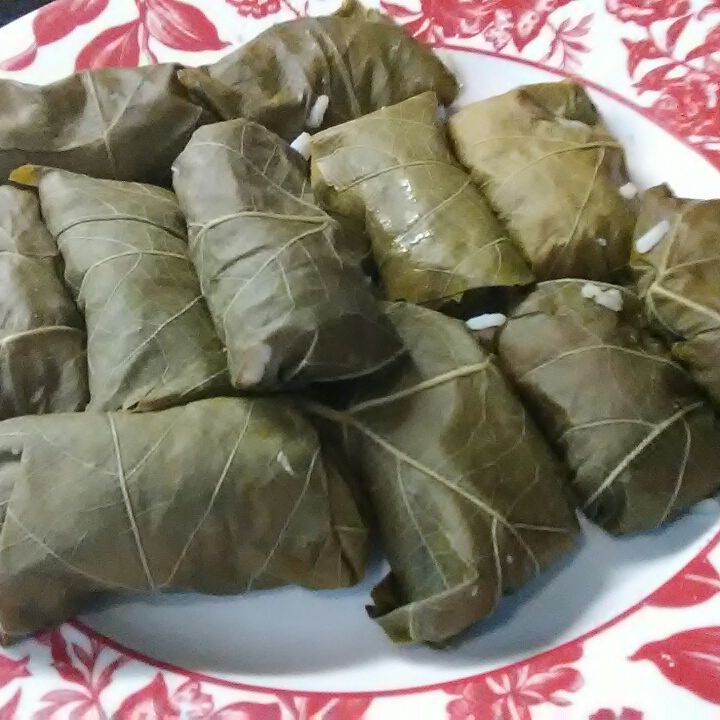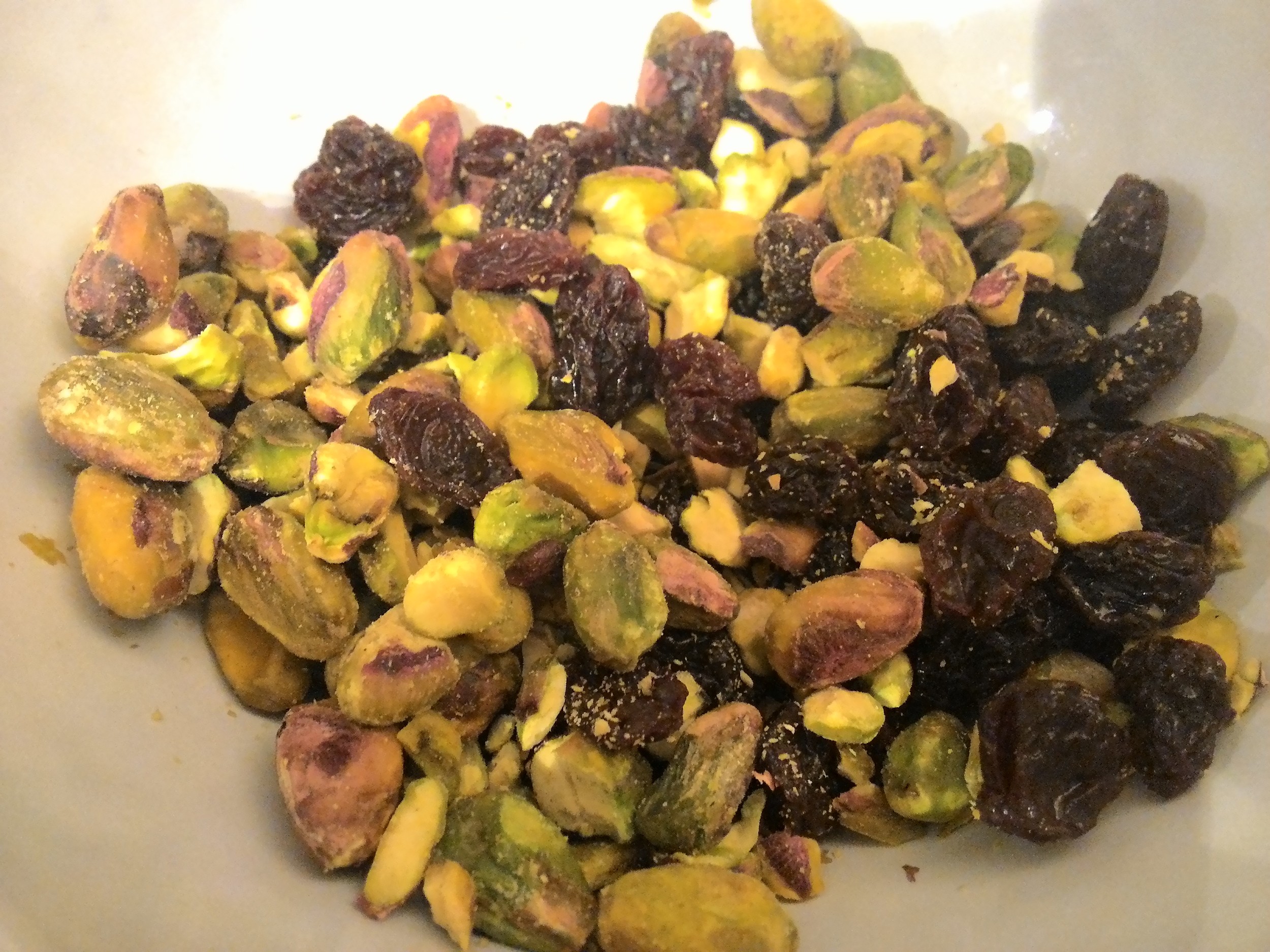Ready for the boil.
Stuffed grape leaves are a staple mezze in Syrian cuisine, and while assembling the stuffing isn't particularly difficult, I was somewhat intimidated by the rolling-of-the-leaves requirement. I worried that I couldn't roll the leaves sufficiently taut as not to fall apart in the boiling process, thereby creating a noxious soup of soggy leaves, vegetables, stray rice, and meats bits. Rather than potentially ruin some quality (and pricey) ground lamb on the first go, I decided to practice by making an unconventional version using some leftovers and this handy pictorial guide.
Rice, dill, garlic, and shrimp with rice made from lobster stock.









